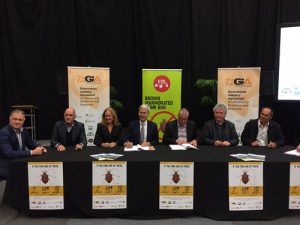Biosecurity 2025 emphasizes shared responsibility, with government, different industries, local government and stakeholders all taking a key role to help mitigate biosecurity risk in response to mounting pressure from increased trade, more complex markets and supply chains and rising passenger numbers.
In recent months, as part of Biosecurity 2025, we have represented the wine industry on a working group tasked with creating a plan which aims to create a biosecurity team of 4.7 million so that every New Zealander becomes a biosecurity risk manager and every business manages their own biosecurity risk. Through this involvement, it’s clear that the wine industry is well placed to be part of this team due to the growing awareness of biosecurity risks amongst members and their increasing participation in biosecurity activities.
Current initiatives to boost participation in biosecurity activities
Over the last 18 months biosecurity has become a key part of New Zealand Winegrowers’ activity. Maximising members’ participation in biosecurity activities has been a key objective of the Biosecurity Strategy signed off last year by the Board. The three examples below highlight some of the work that is ongoing to increase members’ awareness of and participation in biosecurity:
Government Industry Agreement – Progress Underway
Joining the Government Industry Agreement (GIA) for Biosecurity Readiness and Response has been a great step to boost the wine industry’s participation in biosecurity. Earlier in July New Zealand Winegrowers signed the Brown Marmorated Stink Bug Operational Agreement. This agreement will set how the wine industry will collaborate with the Crown and other GIA partners to manage the risks posed by this highest threat risk organism.
By signing this Operational Agreement the wine industry will become a key player in:
• Promoting public awareness of the pest;
• Readiness planning to improve how we can respond to an incursion; and
• Research to develop new response tools including biological control.
With a seat at the table the wine industry can be proactive to ensure that the solutions identified meet the specific needs of our industry.
Catch it: Snap It: Report it
Since launching the Catch it: Snap it: Report it initiative in 2016 we have received approximately 20 reports of suspect biosecurity risk organisms, many from the Marlborough region. These include suspect BMSB, suspect harlequin ladybird and even one report of suspect Chilean Needle Grass. To date, even though none of the potential threats have been identified as actual biosecurity risks, the fact members are reporting anything at all highlights that they are thinking and acting “biosecurity” while out in the vineyard. This is a great result and we encourage all members to continue to Catch it: Snap It: Report It should they see anything unusual throughout 2017. To make it easier add the MPI biosecurity hotline 0800 809966 into your phone’s contact list.
Biosecurity at Grape Days: Increasing awareness
At the 2017 Grape Days we engaged with over 600 members on the risks posed by BMSB, Pierce’s Disease and Glassy Wing Sharp Shooter. During the session the audience got to see safely embalmed BMSB and a Glassy Wing Sharpshooter. These sessions, along with the “Pest of the Month” item in the monthly newsletter “What’s Fermenting”, help keep members up to speed with the latest information about the industry’s most unwanted pests.
Increased awareness of these risks enables members to have discussions about biosecurity risk management with their contractors and equipment suppliers, encouraging them to adopt biosecurity risk management practices as part of their business as usual. Having these discussions with others and partnering with them across the supply chain is an important part of protecting your productive assets. Consistent with Biosecurity 2025 it’s these discussions which are the building blocks of creating a biosecurity team of 4.7 million people.
What next?
During the remainder of 2017 New Zealand Winegrowers will work to publish finalised vineyard biosecurity best practice guidelines. These guidelines will help inform the risk management decisions you make in your vineyard every day and help to embed biosecurity as part of standard wine industry business as usual. Look for them to be published on the revamped members’ website www.nzwine.com.
Conclusion
This column highlights that the wine industry is already an active participant in biosecurity and that we are building our capacity and capability to manage biosecurity risk. While much work remains, we are certainly ahead of the curve when compared with many other industries. Nonetheless, to reach the targets identified in Biosecurity 2025 we must continue to engage with others throughout the wine industry supply chain so that they are aware that their risk management activities are a critical component of overall industry sustainability. Have you had that biosecurity conversation with your equipment supplier or your pruning contractors yet? If you have any questions about biosecurity please get in touch by phone or e-mail: This email address is being protected from spambots. You need JavaScript enabled to view it. or 02119249124.










